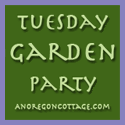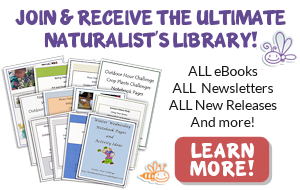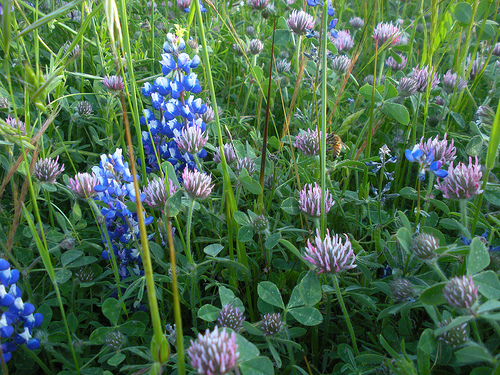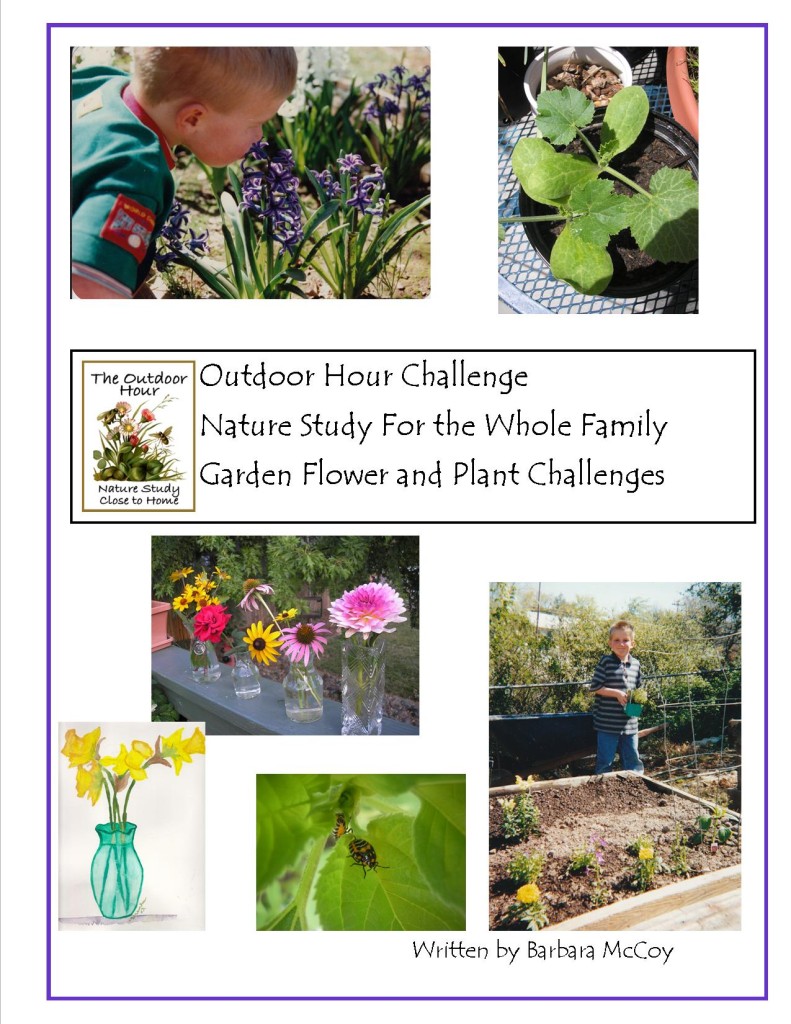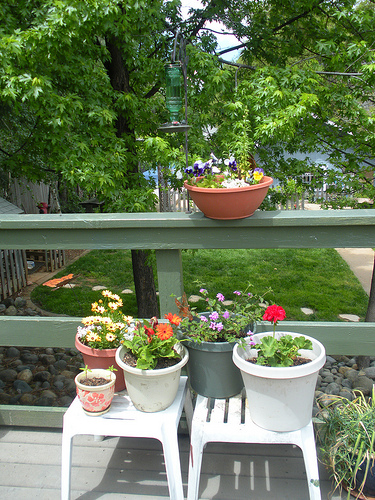 |
| Flowers in Pots Attract the Bees and Hummingbirds…Easy to Maintain |
My goals this year for our garden are a little different than those in the recent past. I usually focus on growing veggies and accent with flowers. This year I am going to be a rebel and do the exact opposite. I am growing color and accenting with edibles. I am hoping for more of an “artist’s garden” this year, providing a space to sit with watercolors and colored pencils and oil pastels on those long hot summer afternoons. Sometimes a garden is more than just for growing food, healing and refreshing us with its beauty and vitality. Of course, you can really call it a “bee garden” since the focus has been on flowers that will attract bees, birds, and/or butterflies.
Our deck usually has some herbs and a few veggies in pots, keeping them close for the dinner time crunch. It is a great plan and I will do the same this year with two tomatoes and some basil.
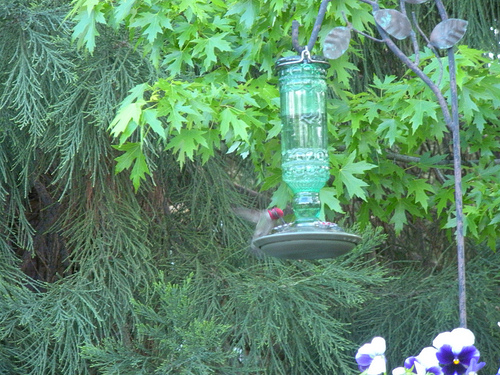 |
| We have had a lot of hummingbird traffic at our two feeders as well as the colorful flowers. |
I am keeping just a few flowers on the deck and most of them will be to try to entice the hummingbirds up to the feeders. Red geraniums, bright daisies, and a hummingbird favorite lantana or two. I started my zinnia seeds and much to my surprise I found a pot full of milkweed growing already over in the corner. Seeds and seedlings are all tucked in ready to go. We are planning on studying our geraniums along with the Handbook of Nature Study (Lesson #163) this summer.
Back in the main veggie garden I am going to be growing pole beans…Kentucky Wonders. I am dreaming of the green towers of vines and the never-ending picking that will come as the summer progresses.
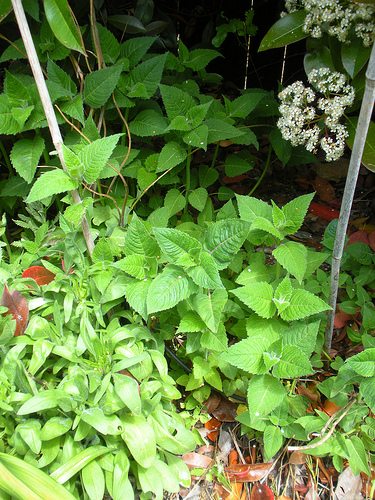 |
| Lots and lots of Bee Balm growing in the butterfly garden. |
What will be missing are many of the water thirsty plants that I usually have that yield very little in proportion to the effort like bell peppers.I have lots of great plants that are well established that will give color without a lot of work.
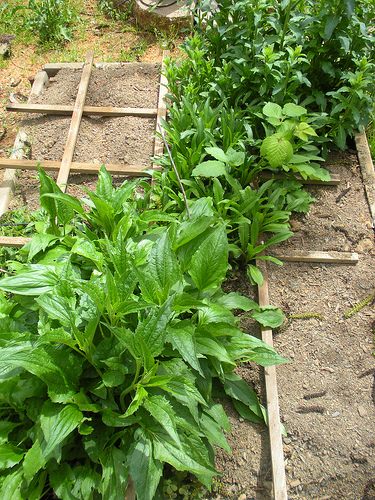 |
| These are coneflowers, chrysanthemums, and daisies from last year. I will fill in the empty spots with seeds. |
The boxes this year are filled in with coneflowers and zinnias, dahlias and daisies. The bees, butterflies, and hummingbirds are going to be having a party all summer long out there. I love having a cutting garden to fill oodles of vases indoors.
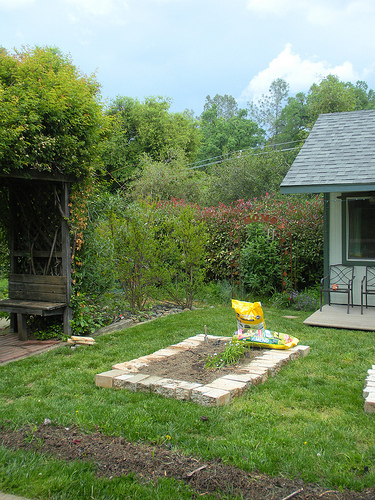 |
| We ended up transplanting a few daylilies to the front of the box and the rest is waiting for me to come finish planting the sunflower seeds. Thunderstorm rolled in this day and I had to give up. |
My new garden space is coming together and the seeds are almost all in the ground. We had a composting problem and somehow a load was dumped in the garden space with un-composted rotten potatoes so we are sifting through again to get those out before planting the Three Sisters Garden (pumpkins, corn, and beans). The pumpkins, corn, and sunflowers will also be part of our summer nature study using the Handbook of Nature Study.
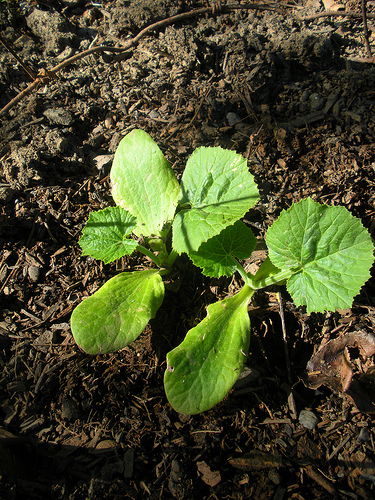 |
| Happy Squash. |
I have four zucchini seedlings happily growing in their new spot and the sunflowers are all showing signs of sprouting as the garden comes alive.
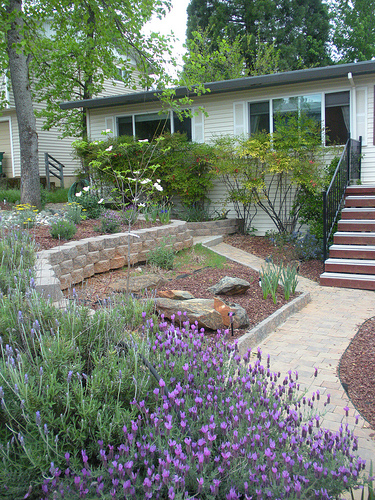 |
| Looks a little different than the last time…now the lavender is the predominant plant, along with the blooming dogwood. |
I am hoping that I don’t regret our decision to shift our garden focus this year but as with anything we can always change things back next year. We have a wonderful Farmer’s Market in our town where we can put our hands on any veggies we decide we need. Still eating healthy and with local produce….an important goal in our family.
That is this week’s garden update…..next week hopefully I will share our Three Sisters Garden.
Jami’s Tuesday Garden Party meme is open from Tuesday to Thursday so there is still time for you to jump in and participate!

